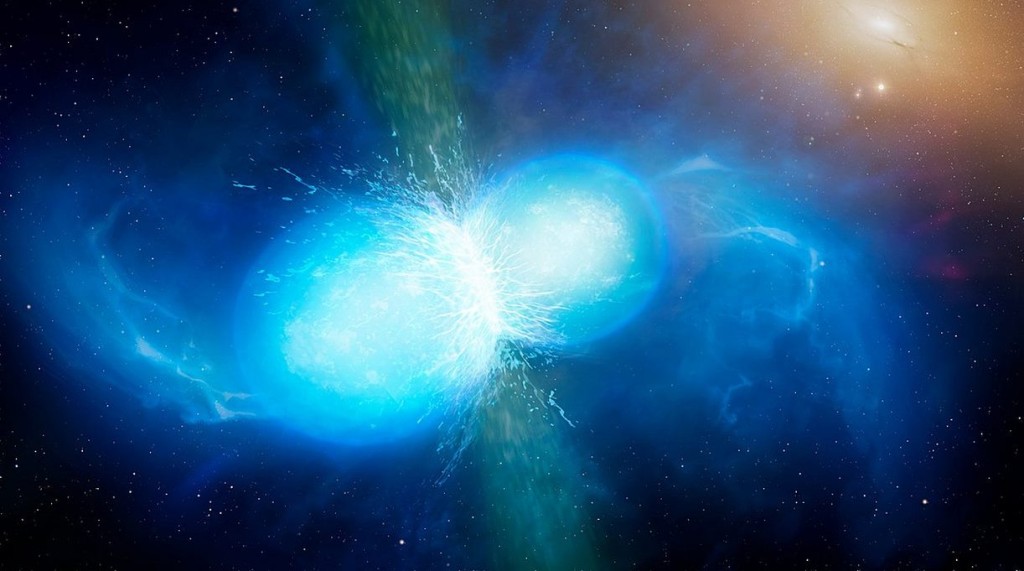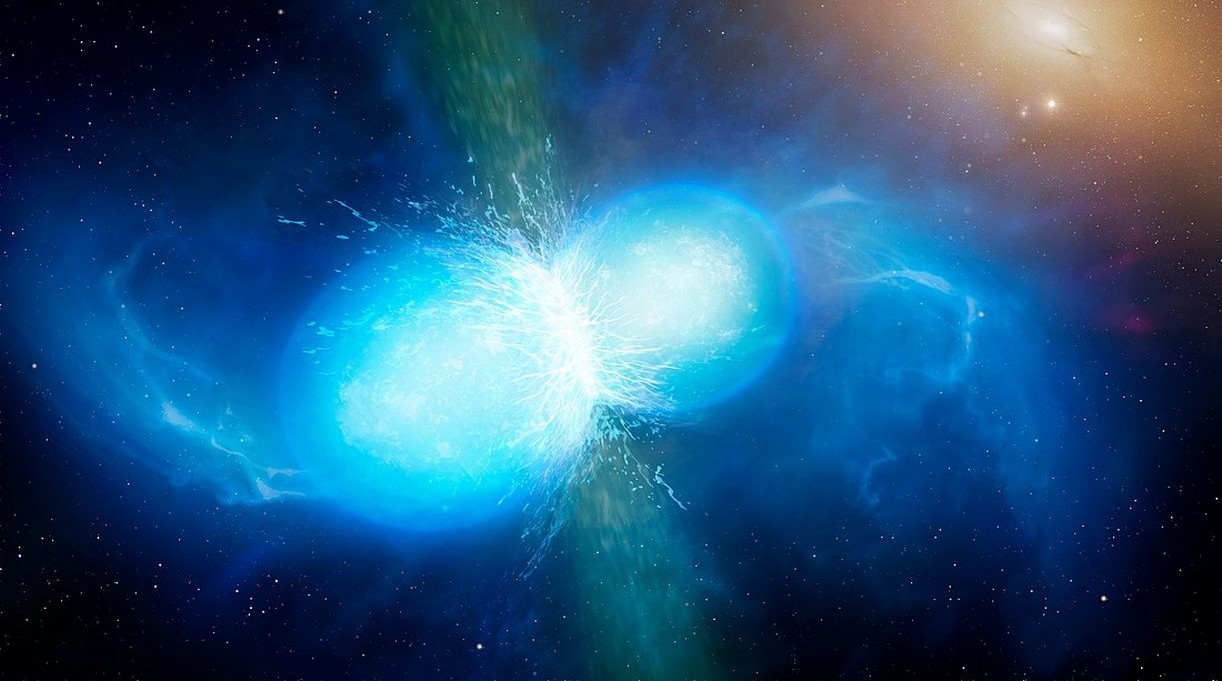
Astronomers just finished putting into words the first observation of a “kilonova,” or the merger of two neutron stars.
The scientists described it as the “perfect explosion” as it was utterly spherical, and brighter than a billion suns. After the two heavy stars merged, for a few moments they formed a massive neutron star, after which they collapsed into a black hole.
A kilonova is a very unique event in the galaxy since few things are as materially dense as a neutron star. There are plenty of objects more massive—the two neutron stars were only a combined 2.7 times the mass of the sun, but no other heavenly bodies can pack so much matter into so small a space.
In the middle of the merger, there could be fundamental physics that astronomers don’t understand yet. For example, the magnetic field formed around it is the strongest recorded in the universe, and so strong it can distort the structure of atoms.
“It is a perfect explosion in several ways. It is beautiful, both aesthetically, in the simplicity of the shape, and in its physical significance,” said astrophysicist Albert Sneppen of the Cosmic Dawn Center in Copenhagen, lead author of the research published in the journal Nature.
“This is fundamentally astonishing, and an exciting challenge for any theoreticians and numerical simulations,” Sneppen told the Guardian. “The game is on.”
MORE FROM SPACE: Incredible 3D Rendering from Jupiter Spacecraft Reveals “Frosted Cupcake” Clouds
Located in a galaxy called NGC 4993 found in the constellation Hydra, about 150,000 light-years from Earth, the two neutron stars began their life as normal stars orbiting each other billions of years ago. Neutron stars are essentially a star “heart” leftover from a supernova explosion. White, dense, small, and spinning incredibly fast, they are fascinating phenomena.
“Given the extreme nature of the physical conditions, with densities greater than an atomic nucleus, temperatures of Billions of degrees, and magnetic fields strong enough to distort the shapes of atoms, there may well be fundamental physics here that we don’t understand yet,” Cosmic Dawn Center astrophysicist and study co-author Darach Watson told the Guardian.
MORE FROM ASTRONOMY: Ringed Planet That Defies Known Physics Discovered in Outer Reaches of Our Solar System
Their merger was witnessed by the European Southern Observatory’s Very Big Telescope in the Atacama Desert, Chile, in 2017. The outer parts of the new stars were torn and stretched into long thin streamers which probably launched gold, uranium, arsenic, platinum, and other rare elements into the universe.
SHARE This Legitimately Brand New Discovery With Your Friends…




















